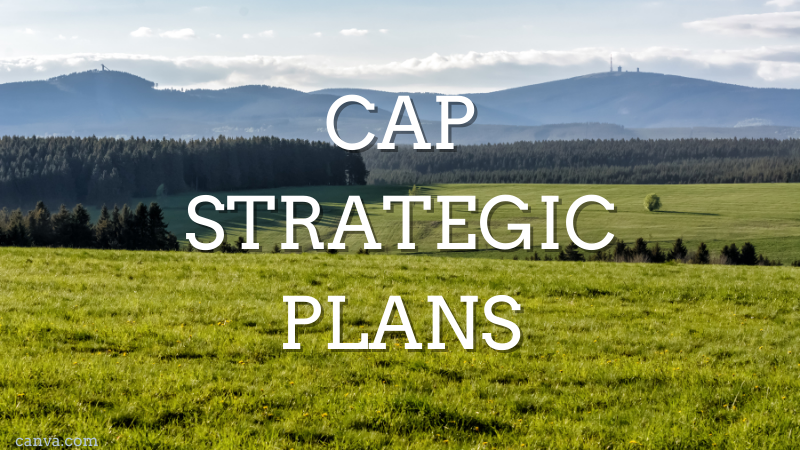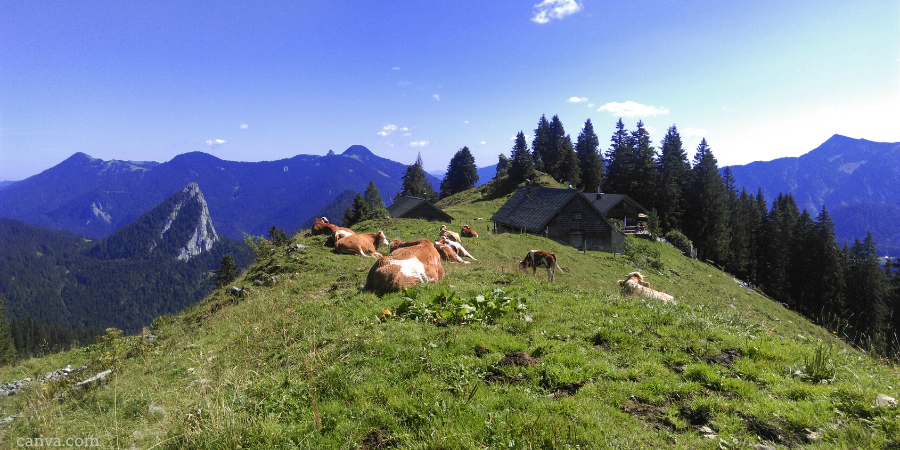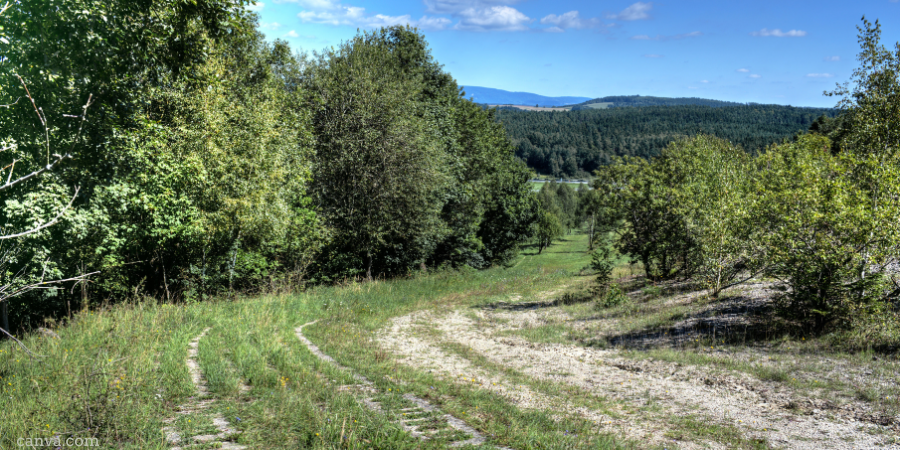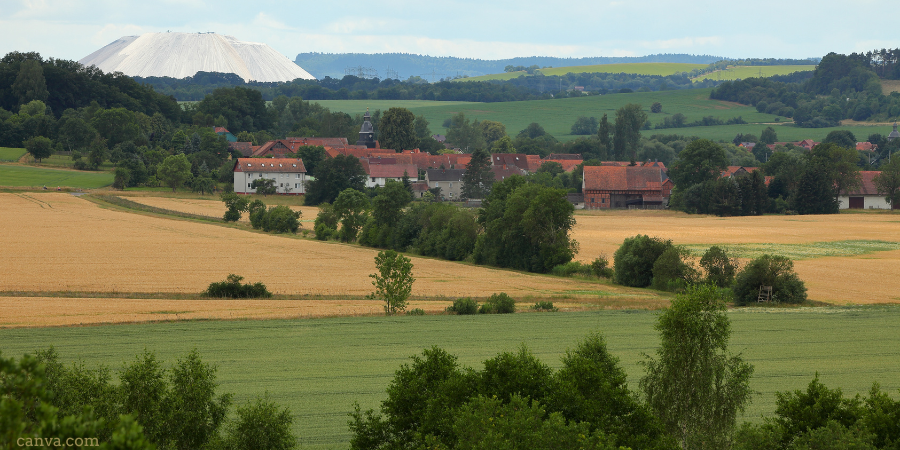
The German CAP Strategic Plan has the potential for an ambitious CAP 2023 to 2027. While the debate on the next CAP post-2027 is already starting, in this article we argue that the German government needs to exploit all potential in the current CAP to increase the ambition towards more climate change mitigation and the protection and enhancement of natural resources and biodiversity. The coalition agreement gives them the mandate to do so.
By Aaron Scheid (Ecologic Institute), Sophie Ittner (Ecologic Institute)
Everything is still possible for the German CAP 2023-2027. An overview.
When the new coalition of Social Democrats, Greens and Liberals came into office end of 2021, expectations were high that the Ministry of Food and Agriculture under a Green flag would use its full mandate to progressively adjust the German CAP Strategic Plan (CSP) (see more information on the German CAP Strategic Plan approval process). But the mic never hit the floor. Member States CSPs can be amended once per year, and according to the coalition agreement of the German government the current architecture will be reviewed by the middle of the legislative period[1] and adapted if necessary.
While the debate on the next CAP post-2027 is already at the starting blocks, the German government needs to exploit all potential for the current CAP to increase its ambition towards better climate change mitigation and the protection of the environment. The coalition agreement gives the mandate to do so. This article will shed some light on the German CSP, its contribution towards climate change mitigation, the protection and promotion of biodiversity and natural resources and the budget distribution based on the report “Environmental and Climate Assessment of Germany’s CAP Strategic Plan” published in February 2023.
A budget made from shadows and light

Within Pillar I, the eco-schemes and partly the sectoral measures are expected to have positive effects on climate and environment. However, Germany ultimately opted for the so-called “Austrian rule” limiting the budget for the eco-schemes to 22% (of Pillar 1 budget) of the payments rather than the 25% required by the European Commission. By far the largest share of the eco-scheme budget is spent on achieving the biodiversity objectives, followed by promoting sustainable development of natural resources, while only a small extend of the budget is spent on achieving the climate objectives.
In contrast to the eco-schemes, in Pillar II Germany exceeds the minimum budget (35%) on environmental and climate objectives[2] by far with almost 60% (11.4 billion euros). Most of this money goes to agri-environmental and climate measures, which account for 45% of the second pillar budget. A closer look confirms that there is a clear focus on measures to promote biodiversity (15% of the total Pillar II budget) and organic farming (20% of the total Pillar II budget), while only 1.3% of the Pillar II budget is spent on climate mitigation and 2% and 2.3% on water and soil protection, respectively.
Nevertheless, the budget alone does not determine the effectiveness of the CAP, as the design of the interventions plays a central role. We’ll look at this in the next sections.

Poor climate mitigation performance
Given the urgent need to reduce greenhouse gas (GHG) emissions from agriculture to meet the targets of the Farm to Fork strategy and the German Federal Climate Change Act, and the fact that Germany is the second largest emitter of GHG from agriculture in the EU, expectations were high that Germany would make significant efforts to reduce its GHG emissions from agriculture. Instead, Germany is missing the opportunity to offer ambitious measures that contribute significantly to climate change mitigation through the first pillar[3].
The eco-schemes primarily serve to achieve other objectives like the protection of biodiversity and thus the effect on climate mitigation remains often indirect. Only the eco-scheme on agroforestry (DZ-0403), which is being offered for the first time in Germany, aims primarily at the conservation of stored carbon in soils and biomass and thus at climate mitigation. However, the effectiveness of this measure remains low due to its unambitious targeted of only 1% of agricultural land and its low funding rate compared to other eco-schemes.
Within Pillar II, the measure directly addressing climate change mitigation[4] offers a set of sub-measures to foster the conversion of arable land into grassland, extensive grassland management, rewetting and management of peatland, water retention in the landscape and cooperative climate protection. While important, these measures do not sufficiently address the urgent need for GHG emissions reduction from land use change, fertilizer use, and animal husbandry. Although the measures on the extensification of grassland and the conservation and rewetting of peatlands[5] address this, the area coverage remains low. For example: Livestock-dense regions such as Lower Saxony, North Rhine-Westphalia and Hesse do not offer any extensification of grassland measure. The same holds true for peatlands. Not all peatland-rich federal states offer peatland-measures to their farmers and if they do, only a small proportion of the peatland area is covered.
Biodiversity: the big winner?
Overall, the German Strategic Plan offers more for the protection and enhancement of biodiversity than on climate change mitigation[6]. The eco-scheme to improve biodiversity and habitat conservation[7] is financially best equipped out of all seven eco-schemes and includes four sub-measures: Two low-threshold measures with potentially low impact on biodiversity (e.g. planting flower strips) and two more complex sub-measures (non-productive land and old grassland stripes) which can be beneficial for nature conservation.
However, it remains questionable if farmers really choose complex options when they have the chance of low-effort alternatives. Nevertheless, the sub-eco-scheme on non-productive land offers an interesting top-up approach for GAEC 8 to enable farmers to go beyond the mandatory non-productive land of 4%. However, top-up approaches only work if minimums are implemented. With the derogation of GAEC 8, the minimum of 4% non-productive land in Germany was abandoned and with that the innovative approach of the top-up.
Also worth highlighting is the eco-scheme on result-oriented extensive management of permanent grassland with at least four regional characteristics. The result-oriented approach is especially attractive, which could lead to high demand by farmers while the effectiveness of the measure on protection and promotion of biodiversity remains moderate.

More is possible to protect soil and water
Water bodies in Germany largely fail to receive good ecological status, while nitrates levels drive the failure of the Water Framework Directive[8][9]. The CSP could be key to reduce pressure on water bodies from agricultural production by incentivising low-input system approaches. Instead of trying to get the most out of the CAP, Germany has settled for the minimum such as in GAEC 4, where they set the minimum requirement of 3 meters for buffer stripes along all watercourses. In addition, the Strategic Plan mentions nutrient pollution as very high priority in Germany but forgets to reflect this adequately through programming specific interventions.
Pesticide contamination of water bodies is a largely underestimated problem. The eco-scheme on prohibiting the use of chemical-synthetic pesticides[10] offers an interesting approach because it can be a first step for farmers that consider going organic in the future. Trial-and-error measures or space to explore new practices are important for farmers. However, this no-pesticide eco-scheme offers a low remuneration which will likely lead to a low uptake by farmers.
Healthy soils are key for sustainable food provision and climate change mitigation and adaptation. Soil erosion and compaction, in addition to the loss of organic matter and soil biodiversity, pose a particular threat to soil quality. The German Strategic Plan tries to reflect this through minimum requirements on tillage management to reduce the risk of soil degradation and erosion (GAEC 5) and soil cover (GAEC 6). However, as important as these minimum requirements are, attractive voluntary interventions are necessary to spur soil health on agricultural land. The agri-environment and climate measure directly targeting soil quality[11] through the creation of erosion strips, improved crop rotations and the cultivation of (fodder) legumes remains low in its area coverage.

First annual review of the Strategic Plan as the next stepping stone
The current Strategic Plan for 2023 falls short of expectations with vast room for improvements. Key lessons learned are:
- Potential for large-scale climate mitigation within the Strategic Plan falls short of expectation with Pillar I measures hardly contributing to climate change mitigation and low funding compared to biodiversity.
- Clear focus on the protection and enhancement of biodiversity, which needs to be positively recognised, while demand and effectiveness are decisive to unlock the potential.
- The enhanced conditionality covers only the absolute minimum with regards to the diffuse pollution of water bodies.
- The plan contains a variety of interesting voluntary measures but the interest by the Federal States is often low to implement them accordingly.
- There is a risk of low uptake by farmers of interesting voluntary measures due to low remuneration.
The German CSP has the potential for an ambitious CAP 2023-2027 period with regards to environmental, biodiversity and climate objectives, while the new CAP architecture gives Member States the flexibility to do so. The German government would be well advised to use this flexibility for an ambitious CAP. To improve the potential impact of CAP spending we recommend to:
- Ensure that there are no further derogations to the enhanced conditionality after 2023. The exemption in 2023 on crop diversification (GAEC 7) and fallow land (GAEC 8) must remain an exception.
- Increase width of buffer strips within GAEC 4 to a minimum of 5 metres to achieve a uniform baseline for buffer strips through the German regions, including the prohibition of pesticide and fertilizer usage in these buffer strips.
- Introduce eco-schemes to reduce nutrient losses through improved nutrient planning especially in regions with intensive livestock farming.
- Apply increasing unit amounts per additional percentage for the eco-scheme on non-productive land, to incentivise farmers to increase their fallow land to the maximum of 6% and meet the EU Biodiversity Strategy target of a total of 10% non-productive land.
- Ensure that the Federal States implement a minimum set of rural development interventions in Pillar II, which are highly beneficial for environment and climate change mitigation, taking regional characteristics into consideration.
- Phase out direct payments on drained peatlands, while using eco-schemes and rural development interventions to prepare the long-term rewetting of peatlands. These measures include the conversion of arable land on organic soils to grassland, the extensification of the use of peatland grassland, and the reduction of livestock in these areas.
- Introduce interventions that support mixed-crop livestock systems, a high on-farm feed production ratio and the reduction of livestock units per hectare at farm level, especially in regions with high livestock density.
The German government is not alone in improving the Strategic Plan. For the first time a CAP strategic plan advisory committee consisting of economic, social and environmental stakeholders supporting the agricultural ministry on the implementation and development of the CSP. This advisory committee can play a crucial role in the adaptation of the strategic plan towards a more ambitious CSP in the coming years.
This article is a synthesis of a report you can found here. For more analyses from Ecologic, you can also check their website.
[1] This would be end of 2023 or beginning of 2024
[2] This includes the so-called ‘ringfencing’ consisting of the following interventions: environmental, climate and other management commitments (ENVCLIM), compensation payments for area-specific disadvantages in relation to the Water Framework Directive (WFD) and EU nature directives (ASD), investments (INVEST) targeting these objectives, as well as 50% of the payments for areas of natural constraints (ANC).
[3] Scheffler et al. 2022 also concluded that the first pillar in Germany contributes only 20 % to climate protection.
[4] The measure is called “Management commitments to improve climate protection” (EL-0101) and is part of the agri-environmental and climate measures.
[5] The measure is called “Peatland rewetting and the promotion of paludiculture” (El-0101-03)
[6] This was also found by the study from Scheffler et al, 2022 based on the draft CAP strategic plan.
[7] “Provision of land to improve biodiversity and habitat conservation” (DZ-0401)
[8] https://www.umweltbundesamt.de/en/data/environmental-indicators/indicator-ecological-status-of-lakes#assessing-the-development
[9] https://www.umweltbundesamt.de/en/data/environmental-indicators/indicator-ecological-status-of-rivers#assessing-the-development
[10] The measure is called “Management of arable or permanent crop areas of the holding without the use of chemical-synthetic plant protection products” (DZ-0406)
[11] Officially called „Management commitments to improve soil protection” (EL-0103)
Download this article as a PDF
 This article is produced in cooperation with the
This article is produced in cooperation with the
Heinrich Böll Stiftung European Union.
More on CAP Strategic Plans
CAP post-2027: An Integrated Rural and Agricultural Policy – Part 1
Can the CAP Strategic Plans Help in Reaching our Pesticide Reduction Goals?
Wallonia’s Observation Letter: A plan that fails to address climate and biodiversity crises
CAP Strategic Plans and Food Security: Fallow Lands, Feeds, and Transitioning the Livestock Industry
A Just and Green CAP and Trade Policy in and Beyond the EU – Part 2
A Just and Green CAP and Trade Policy in and Beyond the EU: Part 1
Bulgaria’s CAP Strategic Plan: Backsliding on Nature and Biodiversity
Changes “required” to Ireland’s CAP Strategic Plan – European Commission
French CAP Plan: What Opportunities for Change During the New 2022-27 Presidential Term?
CAP, Fairness and the Merits of a Unique Beneficiary Code – Matteo Metta on Ireland’s Draft Plan
ARC Launches New Report on CAP as Member States Submit Strategic Plans
Slashing Space for Nature? Ireland Backsliding on CAP basics
Quality Schemes – Who Benefits? Central America, Coffee and the EU
Civil Society Organisations Demand Open and Ambitious Approval of CAP Plans
CAP Strategic Plans: Germany Taking Steps in the Right Direction?
CAP Strategic Plans: Support to High-Nature-Value Farming in Bulgaria
Commission’s Recommendations to CAP Strategic Plans: Glitters or Gold?
German Environment Ministry Proposals For CAP Green Architecture
CAP Performance Monitoring and Evaluation Framework – EP Position
A Rural Proofed CAP post 2020? – Analysis of the European Parliament’s Position
CAP Beyond the EU: The Case of Honduran Banana Supply Chains
CAP | Parliament’s Political Groups Make Moves as Committee System Breaks Down
CAP & the Global South: National Strategic Plans – a Step Backwards?
CAP Strategic Plans on Climate, Environment – Ever Decreasing Circles
European Green Deal | Revving Up For CAP Reform, Or More Hot Air?
Climate and environmentally ambitious CAP Strategic Plans: Based on what exactly?
How Transparent and Inclusive is the Design Process of the National CAP Strategic Plans?




